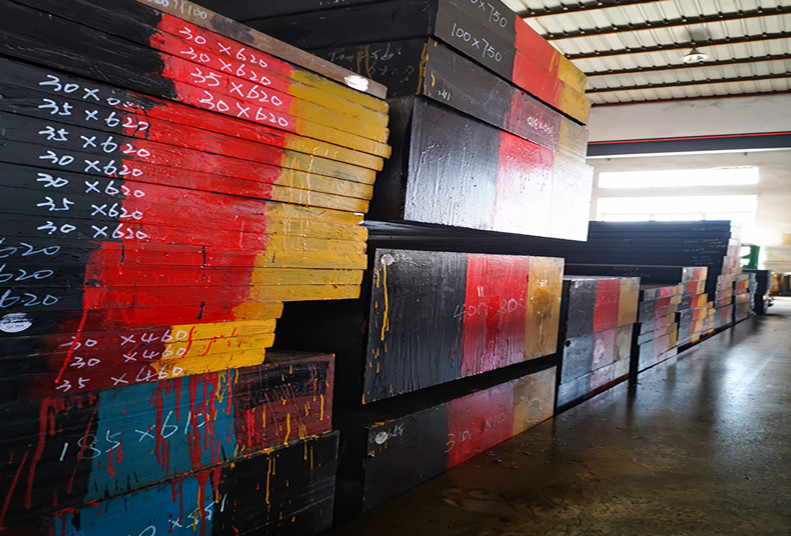Six problems in heat treatment of die casting die steel?
2020-06-04 16:23:34The Shenzhen RIGHT Metal Co., Ltd.is composed of senior professionals engaged in die steel production, R & D, testing, sales, application, heat treatment and other fields, with the longest working experience of more than 25 years. Since its establishment, the company has adhered to close cooperation with national key full process special steel enterprises (large special steel enterprises with advanced and complete equipment, integrating steel-making, forging, rolling, machining, heat treatment, technical center and testing center), and customized and developed "YUTE brand" high-grade die steel in accordance with international advanced technical standards. In 2019, YUTE metal was authorized to start the international high-end die casting die steel general agent in South China.

The Shenzhen RIGHT Metal Co., Ltd. is mainly engaged in high-grade die-casting die-casting die-casting steel series products, as well as plastic die-casting steel antirust series and mirror series products, precision cold stamping die-casting steel series products and customized development of various brands and shapes and sizes of die-casting steel products according to user requirements. The oxide layer of die casting die steel is difficult to be washed out with hydrochloric acid. Castings not heat treated. #If the heating temperature exceeds the specified value, the mechanical properties such as grain growth, brittleness, toughness, easy deformation and cracking will deteriorate, and good control of heating temperature can avoid overheating. At this time, s, P and other compounds are enriched at the grain boundary, resulting in the decrease of the binding force of the grain boundary and the deterioration of the mechanical properties.
1. How does the hardness of die casting die steel reach 58 degrees after heat treatment?
Heating and quenching at 1050-1100 ℃ and oil quenching can meet the requirements, but generally hot working dies do not need such high hardness. Such high hardness performance will be very poor and not easy to use. Generally, it has good performance and durability at HRC 46-50.
2. What kind of whitening is used on the surface of the mould after heat treatment?
Problem supplement: mold polishing. Generally, the mould is polished with oilstone before nitriding. When nitriding returns, the black layer is polished with oilstone. It's troublesome to polish again. Without polishing, a mirror cannot be polished. There are H13 materials and a variety of imported materials. If the medicine can be washed white, it can be used directly. Elegant. Stainless steel pickling solution or hydrochloric acid cleaning. Sandblasting may also be used. The grinding cost of the grinder is high, and the processing quantity is large, which may cause the size unqualified. If hydrochloric acid can not be washed out, it is estimated that you are using high chromium die steel D2 or H13, and the oxide layer of high chromium die steel is difficult to wash out. Stainless steel pickling solution should be available. It's sold in abrasive shop or stainless steel shop.

3. Do you have stainless steel pickling cream
The oxide layer of die casting die steel is difficult to be washed out with hydrochloric acid. There is another way, I use it myself. Now that the die steel has been polished with asphalt, the surface of the die steel is quite smooth. In fact, it can be ground with crude oil or sand belt and then heat treated. When you come back, polish it with fine kerosene. The method I use is to use a fiber grinding wheel first, which can effectively remove the black skin, and then polish. Or sand blasting test with 800 mesh boron carbide shall be able to remove the black skin without too much effort to regrind.
4. How do heat treatment plants heat metals?
There are many equipments in the heat treatment plant, such as box furnace, well furnace and box furnace. Many heat treatment can be carried out in this aspect, such as annealing, normalizing and quenching, tempering, which are common heat treatment. Do not temper at 300-375c, which will reduce the toughness and brittleness of the tool. Temper immediately after quenching. If the quenching temperature is higher than 1100c, temper 2-3 times at 520c. Please note that excessive quenching temperature is easy to decarburize, so preheating spheroidizing annealing can be carried out before quenching.
5. How to distinguish heat treated parts from non heat treated parts?
The workers inadvertently mixed the untreated workpiece with a batch of heat-treated debugged workpieces. Now how do you distinguish them from the cut piece? Do not look at metallographic examination. This will damage the product, so they need to speed up delivery? The heat treatment process of 30Cr was normalized and tempered. Castings not heat treated. Both of them can not be distinguished after shot blasting, the hardness is between 35-45, and can not be distinguished by hardness. #If not according to hardness and heat treatment oxidation color. I suggest you distinguish by tapping. The microstructure of castings is different from that of quenched and tempered parts, and the internal friction is also different. Tap to distinguish.
6. What does overburning mean in heat treatment?
If the heating temperature exceeds the specified value, the mechanical properties such as grain growth, brittleness, toughness, easy deformation and cracking will deteriorate, and good control of heating temperature can avoid overheating. When the steel is heated above a certain temperature in the range of solid-liquid line temperature, the chemical composition of austenite grain boundary changes, and melting occurs in some or the whole grain boundary. At this time, s, P and other compounds are enriched at the grain boundary, resulting in the decrease of the binding force of the grain boundary and the deterioration of the mechanical properties. After combustion, the steel can not be heat treated or processed.








